UXO Survey Gives Stadium Works the Green Light
Client / Site: Laing O’Rourke, Bramley Moore Dock, Liverpool (Everton Football Stadium Site)
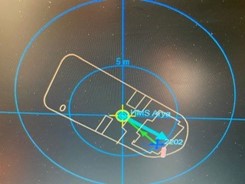
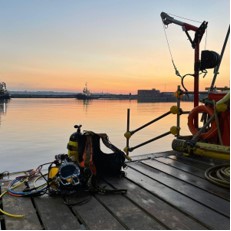
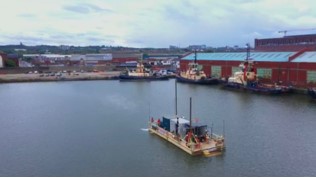
The Challenge
Laing O’Rourke needed to clear potential unexploded ordnance from the contaminated dock bed at Bramley Moore before foundation work could begin on Everton Football Club’s new stadium.
The 150-year-old dock basin presented multiple operational challenges for UXO clearance:
- Heavy wartime bombing legacy – Liverpool docks were prime Luftwaffe targets during WWII
- Contaminated dock bed – Decades of industrial use creating hazardous working conditions
- Ferrous debris field – High concentrations of metal debris complicating UXO detection
- Buried signatures – UXO signatures (magnetic and acoustic signals detected by survey equipment indicating potential unexploded ordnance) obscured by sediment and industrial waste
- Zero visibility conditions – Contaminated water preventing visual identification
- Compressed timeline – Stadium construction schedule demanding rapid UXO clearance
- Critical safety requirement – Any missed UXO could be detonated by pile driving operations
Without comprehensive UXO clearance to ALARP (As Low As Reasonably Practicable) standards, foundation work couldn’t proceed safely.
Our Response
Dagger Diving deployed a specialist UXO investigation team with advanced detection equipment designed for complex contaminated environments.
Dual Operation Setup – We positioned two independently operated barge-based dive spreads running 24-hour shift cycles, maximizing productivity within the compressed construction schedule.
Precision Target Location – Our UXO-qualified divers used precision tracking systems accurate to within ±1 metre of identified signatures, ensuring systematic investigation of every potential threat.
Advanced Detection Technology – For deeper or obscured signatures, divers deployed hand-held magnetometers for target reacquisition and acoustic imaging systems (sonar cameras) to support identification in zero visibility conditions.
Systematic Excavation – Air-lift systems created controlled suction to remove sediment and metallic debris, providing safe access to buried targets without risk of accidental detonation.
Real-Time Safety Monitoring – All operations used live positional tracking systems for continuous diver monitoring and comprehensive documentation, ensuring full accountability for every investigated target.
Specialist UXO Protocols – Our team followed strict UXO control procedures throughout, with emergency response plans and specialist equipment ready for any confirmed ordnance discoveries.
The Outcome
Mission accomplished – site cleared to ALARP standard enabling safe stadium foundation construction.
Complete UXO clearance results:
- Site cleared to ALARP standard – Comprehensive investigation eliminating UXO risk to acceptable levels
- Safe foundation work enabled – Pile driving operations cleared to proceed without explosive threat
- Schedule exceeded – Delivery completed ahead of construction programme requirements
- Zero safety incidents – Perfect safety record despite contaminated environment and UXO risks
- Stadium project unblocked – Critical enabling works completed for Everton’s new home
Our systematic UXO investigation and clearance enabled one of Liverpool’s most significant regeneration projects to proceed safely, removing wartime explosive threats from this historic dock site.
Project delivered ensuring public safety and construction programme success with zero compromise on UXO risk management.
Performance Metrics:
- 96 successful dives completed in contaminated dock conditions
- Zero accidents, near misses, or incidents – Perfect safety record in high-risk environment
- Live diver positioning recorded for all entries ensuring complete site coverage
- 3 corrective actions identified and closed – Proactive safety culture maintained
Technical Note: UXO signatures are magnetic and acoustic signals detected by survey equipment indicating potential unexploded ordnance buried in sediment. These signatures require physical diver investigation to determine whether they represent genuine explosive threats or harmless metallic debris. Liverpool’s docks were heavily bombed during WWII, making thorough UXO clearance essential before any construction work involving vibration or excavation.


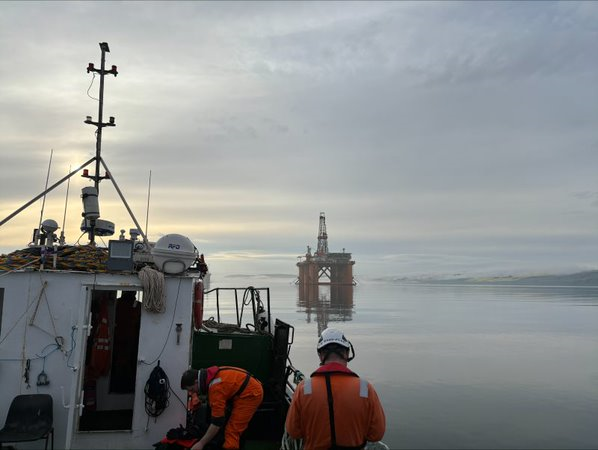
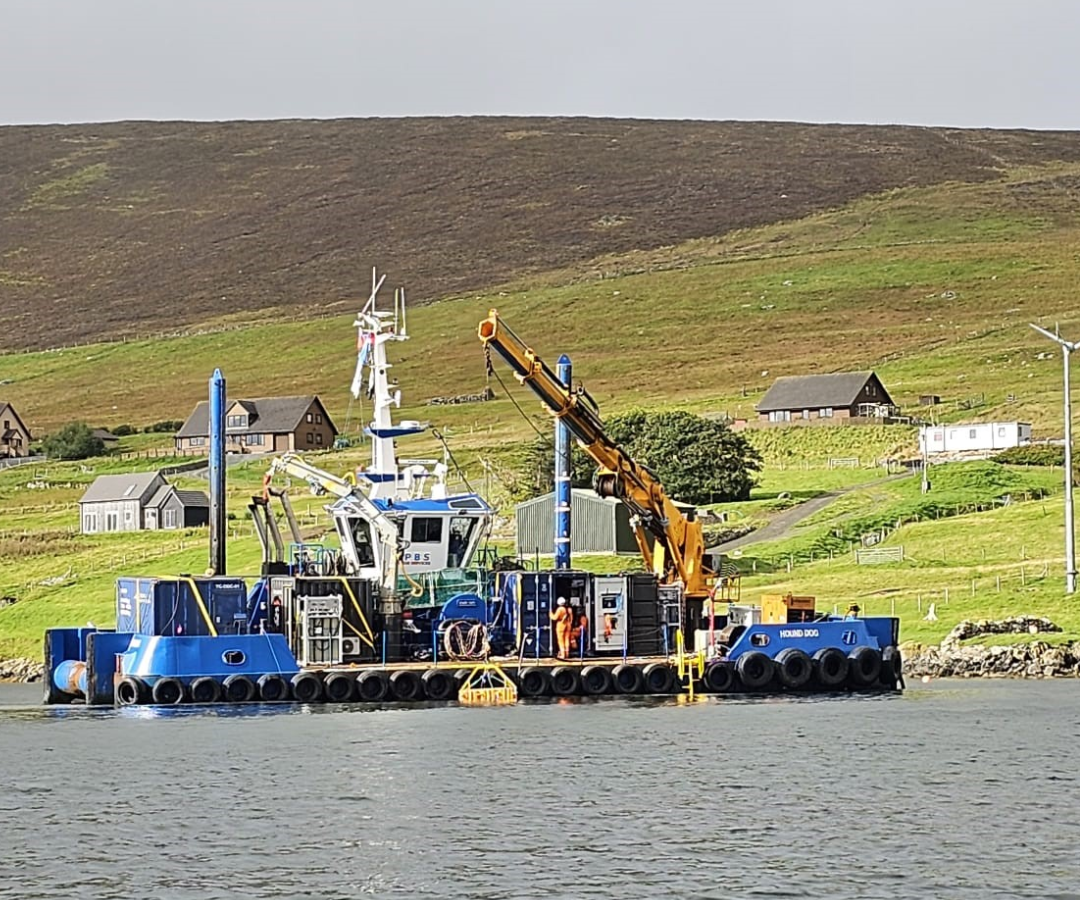
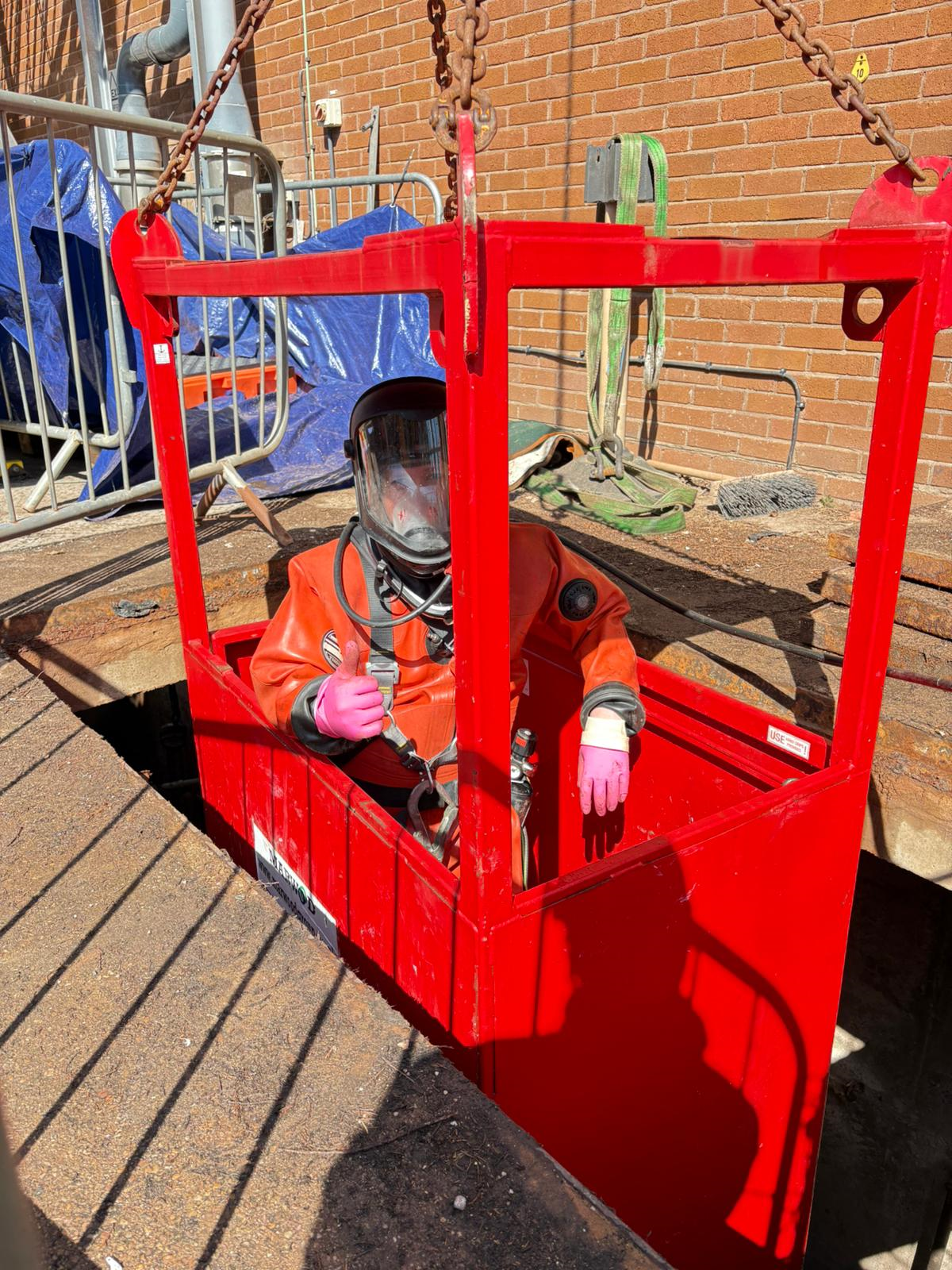
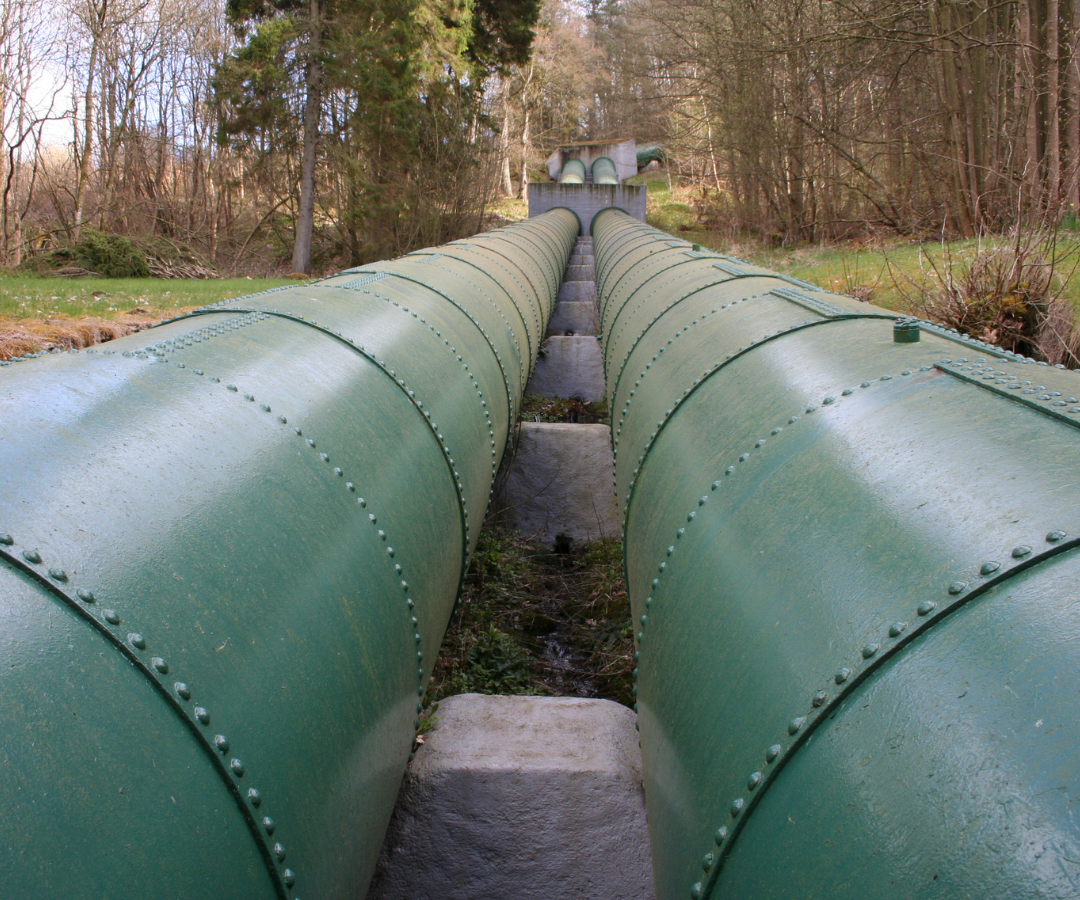

Leave A Comment
You must be logged in to post a comment.